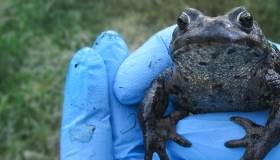
DENVER/July 7, 2022 – Researchers studying pets living in the households of humans diagnosed with methicillin-resistant Staphylococcus aureus (MRSA) infections found that environmental factors could be more important than pet-associated risk factors when it comes to driving drug resistance. The findings are published in the journal Zoonoses and Public Health.
The research team analyzed data previously collected in the ‘Pets and Environmental Transmission of Staphylococci’ (PETS) project. They looked at Staphylococcus spp. isolates from 63 dogs and 47 cats in households with a MRSA-infected person. The team looked at a variety of factors, such as prior antibiotic administration in the pets, neuter status, contact with animals outside the home, and environmental risk factors. The team found that resistant bacteria could persist in the environment, on items such as counter surfaces and bedding, even if people and animals tested negative for the same bacteria.
“Our findings suggest a need to focus on environmental control strategies to protect both pets and people in households in which a MRSA-infected person resides,” said Dr. Meghan Davis, Associate Professor in the Department of Environmental Health and Engineering at Johns Hopkins Bloomberg School of Public Health and one of the study’s authors. “There has been a lot of concern that pets play a critical role in the persistence of resistant bacteria in homes but, in this specific context, the local environment was more important, since all the pets with multidrug-resistant Staphylococcus aureus were in homes with environmental contamination.”
Infections with MRSA have increased in people in recent years. Pets can be infected by MRSA from contact with people with the infection. There is evidence that, while MRSA rarely causes disease in pets, pets can serve as carriers of infection, serving as a source for human re-exposure or a source of antibiotic-resistant genes. This study shows the importance of looking at all factors in households with MRSA-infected residents, including environmental factors such as use of cleaning products and the presence of unwanted pests, as well as factors driving resistance in certain Staphylococcus subspecies.
“These findings could not only have implications for intervention strategies for staphylococci that fall under the umbrella of One Health—where we need to consider not just people and pets but also their shared environments in the home,” said Davis, “The findings could also inform the investigation of other reverse zoonoses—pathogens like MRSA and COVID-19 that pets often get from people.”
About Morris Animal Foundation
Morris Animal Foundation’s mission is to bridge science and resources to advance the health of animals. Founded in 1948 and headquartered in Denver, it is one of the largest nonprofit animal health research organizations in the world, funding more than $142 million in critical studies across a broad range of species. Learn more at morrisanimalfoundation.org.




